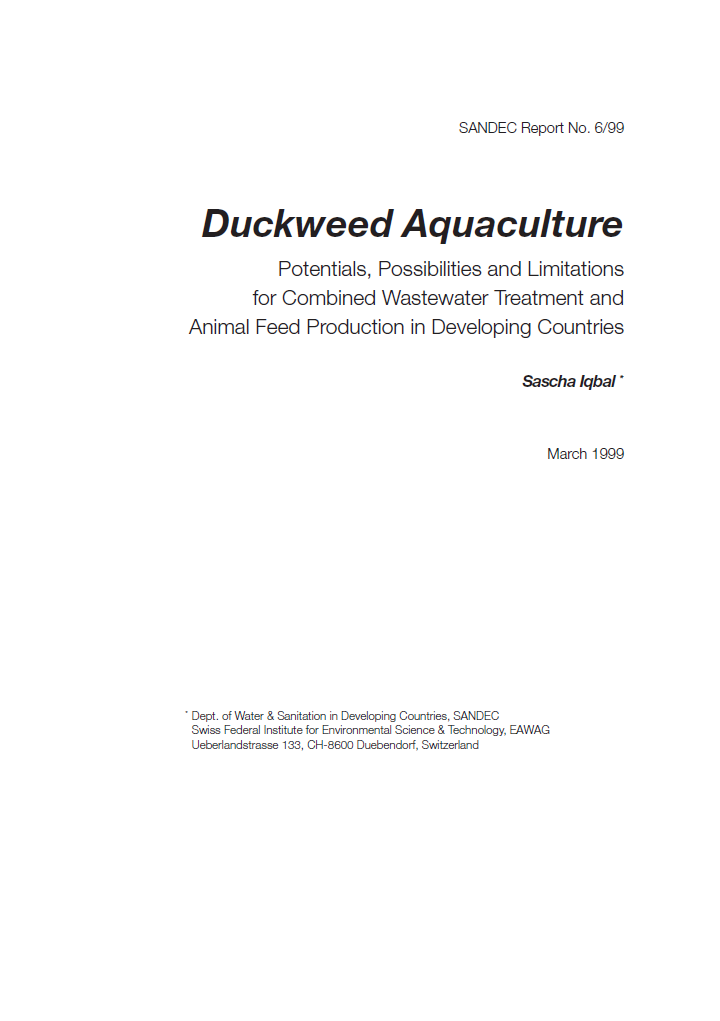Duckweed Aquaculture Potentials, Possibilities and Limitations for Combined Wastewater Treatment and Animal Feed Production in Developing Countries Iqbal, S. (1999)
The rapidly growing and small floating aquatic plants of the botanical family of Lemnaceae are capable of accumulating nutrients and minerals from wastewater. The latter are finally removed from the system as the plants are harvested from the pond surface. Because of their comparatively high productivity and nutritional value, particularly their high content of valuable protein, they provide an excellent feed supplement for animals such as fish or poultry. Duckweed holds the potential to create a financial incentive for controlled faeces and wastewater collection in both rural and urban areas and, therefore, improve sanitary conditions. When duckweed biomass is used for animal production, the generation of income and nutritional improvement appear as possible side-benefits from the wastewater treatment process. Thus, the full potential of duckweed aquaculture lies in its combined use in the fields of sanitation, food production and income generation.
This literature review provides a first overview of the possibilities, potentials and limits of duckweed aquaculture and its combined use in wastewater treatment and animal feed production in low and middle-income countries. It is somewhat limited as critical literature on duckweed field use is scarce and difficult to obtain (e.g. unpublished internal documents). According to NGOs and commercial suppliers, the duckweed projects seem very positive and promising, and the practical problems encountered with their application rarely mentioned.
Bibliographic information
Iqbal, S. (1999). Duckweed Aquaculture Potentials, Possibilities and Limitations for Combined Wastewater Treatment and Animal Feed Production in Developing Countries Eawag-Sandec, Dübendorf, Switzerland.
Filter / Tags
OtherEnglish

